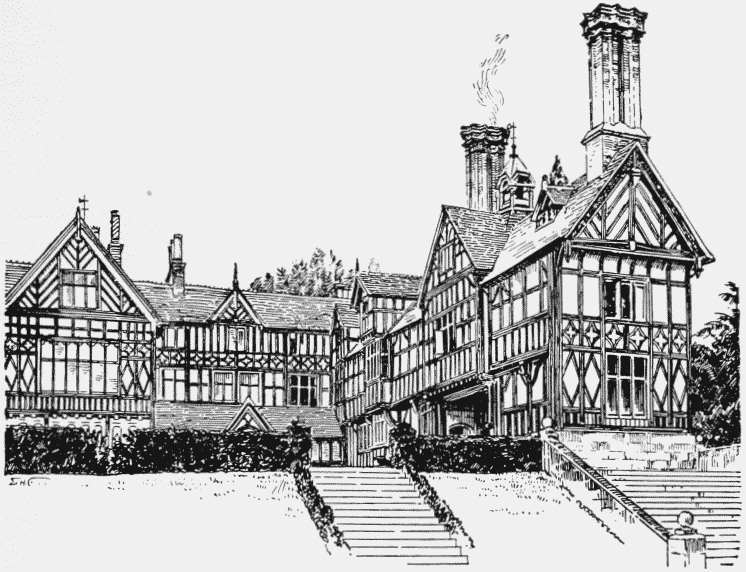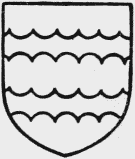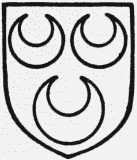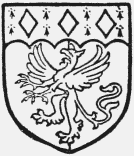A History of the County of Worcester: Volume 3. Originally published by Victoria County History, London, 1913.
This free content was digitised by double rekeying. All rights reserved.
'Parishes: Rous Lench', in A History of the County of Worcester: Volume 3(London, 1913), British History Online https://prod.british-history.ac.uk/vch/worcs/vol3/pp497-500 [accessed 23 April 2025].
'Parishes: Rous Lench', in A History of the County of Worcester: Volume 3(London, 1913), British History Online, accessed April 23, 2025, https://prod.british-history.ac.uk/vch/worcs/vol3/pp497-500.
"Parishes: Rous Lench". A History of the County of Worcester: Volume 3. (London, 1913), British History Online. Web. 23 April 2025. https://prod.british-history.ac.uk/vch/worcs/vol3/pp497-500.
In this section
ROUS LENCH
Lenc, Biscopesleng (xi cent.); Lench Randulf, Lelenz (xii cent.); Randulves Lench (xiii cent.); Lench Rondolf (xiv cent.); Rouslench, Randolphs Lench (xvi cent.).
The parish of Rous Lench lies in the east of the county. Piddle Brook forms its northern and an unnamed stream, a tributary of Whitsun Brook, its western boundary. The road from Worcester to Alcester passes through the north of the parish, and from it a road runs north to Radford and Inkberrow, crossing Piddle Brook by a ford. A second branch road runs southwards to the village of Rous Lench

Rous Lench Court from the North-west
The area of the parish is 1,494 acres, (fn. 1) and the land is chiefly arable, the principal crops being cereals. Fruit and flower farming are carried on to some extent, and the women were employed in glove-stitching in the middle of the 19th century, but the industry has now died out. The soil is sand and marl and the subsoil Keuper Marl and Lower Lias.
The village of Rous Lench is situated on a plateau about 200 ft. above the ordnance datum. To the east the land rises to 300 ft.; to the west and north it is undulating and lies between 170 ft. and 200 ft. above ordnance datum.
The village lies on a branch road from the Worcester and Alcester high road. The houses, many of which are half-timbered and some still thatched, are built round a triangular green, formerly crowned by a magnificent group of elms, of which only one now remains. To the north of the green lies the church, in a churchyard an acre in extent, bounded on one side by an ancient stone wall and on the remaining sides by the moat and park. A little way off on the Fladbury road is the now ruinous pound. At the south-west angle is a picturesque red brick building built by Sir Charles Rouse-Boughton as a public-house on the site of an earlier one. It was closed as an inn by Dr. Chafy, and enlarged and opened by him in 1882 as a parish-room and workmen's club, now known as Chafecote.
Rous Lench Court. the property and residence of the Rev. William Kyle Westwood Chafy, D.D., situated on the northern slope of a hill to the south of the village, is a much-modernized two-storied halftimber house of the early 16th century. The original house appears to have been a large building, inclosing two quadrangles, divided from each other by a great hall. The greater part of the house was pulled down about a hundred years ago, and the buildings on the south and west sides of the western or entrance quadrangle, forming an L-shaped block, alone survive. Remains of the lesser quadrangle were standing within living memory, and traces of the demolished servants' wing and of the flagging of the great hall were found by Dr. W. K. W. Chafy in the course of laying out the grounds on the east side of the house. The existing remains seem to have contained the private apartments; the kitchen and offices seem to have adjoined the quadrangle on the east side of the hall. In the west wing is the original entrance gateway, with the porter's lodge on the north side giving access to the former servants' wing. On the first floor is a large room known as the 'matted gallery,' with two fireplaces contemporary with the earliest building, one having its original moulded jambs and a fourcentred head. The walls are lined with Elizabethan panelling. Practically no other original detail of interest remains internally, and modern additions have been made at the eastern and western ends of the southern range. Externally the timbering has been much restored and the chimney shafts are mostly new. The terraced gardens with their clipped yew hedges, laid out under the direction of Dr. W. K. W. Chafy, form an almost unique example of topiary art. The splendid yew ring surrounding a summerhouse on the south-east side of the house, together with a few single trees here and there and a fine avenue, remain as survivals of the original gardens, which could never have been large. The whole now covers about 7 acres. In the park is still to be seen the moat which surrounded the old manor-house. It incloses an area of about half an acre in extent. About 1647 Richard Baxter, the Nonconformist, wrote part of his 'Saint's Everlasting Rest' while staying here. (fn. 2) In 1646 he says in Reliquiae Baxterianae, 'my quarters fell out to be at Sir Thomas Rous' at Rous Lench, where I had never been before. The Lady Rous was a godly, grave, understanding woman, and entertained me not as a soldier but a friend.' (fn. 3) A tree in the garden, which has now disappeared, was known as Baxter's Tree.
Radford is a hamlet to the north on the Worcester and Alcester road, and in the east of it is a brick and drain pipe works.
An Inclosure Act for Rous Lench was passed in 1778, (fn. 4) and the award is dated 27 February 1779. (fn. 5)
Among the place-names are Pittmeade and Le Widowes End, found in the 16th century. (fn. 6)
MANORS
The manor of ROUS LENCH is probably to be identified with the 'Lenc' which was acquired by Alfstan the prior, brother of Bishop Wulfstan, for the church of Worcester about 1062. (fn. 7) This estate became annexed to the manor of Fladbury, and in the time of Edward the Confessor the bishop held 2 hides in demesne, while the rest of the manor, 5 hides, was held by France, who did all the services due for it. By 1086 the whole manor had passed into the hands of Urse the Sheriff, under whom it was held by Alvred. (fn. 8) It was, however, still held under the manor of Fladbury, and continued to be so held until the end of the 13th century. (fn. 9)
Urse's interest in the manor passed with his other possessions to the Beauchamps (see Elmley Castle), and was held by them and their descendants until the end of the 15th century, when the overlordship of Rous Lench passed with most of their other possessions into the hands of Henry VII. (fn. 10)
The tenants of the manor under the lords of Elmley adopted the name Lench. Randolf son of Roger de Lench held the manor in the time of Henry II, (fn. 11) and is probably to be identified with Randolf de Lench, who paid 40 marks in 1175–6 for pardon for trespass in the forest. (fn. 12) Roger de Lench was the representative of this family early in the 13th century. (fn. 13) It was probably he who with Stephen de Lench resisted the claim of the Abbot of Halesowen to common pasture at 'Hale Lench' in 1230. (fn. 14) Two years later he obtained from the king a grant of protection against Jews who held his lands as security for debt. (fn. 15) Peter de Lench paid a subsidy of 4s. at Lench Randolf in 1280, (fn. 16) and a Peter de Lench held land in Worcestershire in 1290. (fn. 17) Thomas de Lench was holding the manor in 1315, (fn. 18) and still seems to have been in possession in 1329, as he presented to the church at that date. (fn. 19) In 1346 it was returned that William son of John de Lench, Sir John de Hampton, Richard de Lench, John de Chester (fn. 20) of Lench and Henry Norreys held the manor, (fn. 21) but Richard de Lench presented to the church three years later. (fn. 22) In 1366–7 Robert de Derlaston settled the manor of Rous Lench on Thomas Snodhull of Rous Lench and Lucy his wife and their issue, with remainder in default to Henry Bruyn and his heirs. (fn. 23) In 1381–2 Thomas and Lucy sold the manor and advowson of the church to John Rous. (fn. 24) John seems to have granted this manor for life to his father John Rous of Ragley, for on the death of the younger John in 1396–7 John Rous and Christina his wife were holding the manor by their son's gift. Robert Rous was brother and heir of the younger John, (fn. 25) but the manor of Rous Lench seems to have passed to Henry, a younger brother. (fn. 26) Henry was succeeded by his son Thomas, (fn. 27) who obtained licence in 1445 to have divine service celebrated in the chapel or oratory in his manor of Rous Lench. (fn. 28) William son of Thomas died seised of the manor in 1505–6, leaving Thomas his son and heir. (fn. 29) Thomas was succeeded by his son John. (fn. 30) Edward son and successor of John died in 1611, leaving a son Sir John Rous. (fn. 31) He served as Sheriff of Worcestershire in 1610 and 1636, (fn. 32) and died in 1645. (fn. 33) His son Sir Thomas Rous, who had been created a baronet in 1641, was the friend and host of Richard Baxter and an ardent opponent of the Royalists during the Civil War. (fn. 34) He died in 1676. (fn. 35) Sir Edward Rous, his son by his first wife, followed him and died without issue 5 November 1677, when the baronetcy and estates devolved on his half-brother Sir Francis Rous. He was succeeded in 1687 by his brother Sir Thomas Rous, (fn. 36) who died without issue on 29 December 1721, when the baronetcy became extinct and the estates passed to his sister Elizabeth, (fn. 37) who, dying unmarried in 1729, was succeeded by Thomas Philipps, (fn. 38) a descendant of the last baronet's half-sister. He took the surname of Rouse and died unmarried 30 December 1768, leaving his estates to his distant cousin Charles William Boughton, who took the additional surname of Rouse. (fn. 39) He was created a baronet (BoughtonRouse of Rous Lench) in 1791, (fn. 40) but three years later he succeeded, on the death of his brother, to the baronetcy of Boughton and transposed the order of the name to Rouse-Boughton. (fn. 41) He died on 26 February 1821, (fn. 42) but the manor seems to have passed before his death to his son William Edward Rouse-Boughton, who was dealing with it in 1810. (fn. 43) He died 22 May 1856, and was followed by his eldest son Sir Charles Henry RouseBoughton. (fn. 44) The latter sold the manor of Rous Lench to the present owner, Dr. William Kyle Westwood Chafy of Sherborne, in 1876. (fn. 45)

Rous of Ragley. Sable two bars engrailed argent.

Boughton. Sable three crescents or.

Chafy. Party gules and azure a griffon argent and a chief engrailed ermine with three lozenges azure therein.
In 1410–11 Thomas Throckmorton and his wife Agnes were dealing with two messuages and 4 carucates of land in Rous Lench. (fn. 46) Agnes Throckmorton held half a fee in Rous Lench jointly with Thomas Serchesden in 1428, (fn. 47) and John Throckmorton presented to the church in 1433. (fn. 48) It was perhaps this estate which, as the manor of Rous Lench, was held by Francis Folliott of Pirton at the time of his death in 1545. (fn. 49) His son John succeeded him and died in 1578, leaving a son Thomas. (fn. 50) Thomas and his wife Katherine were dealing with the manor in 1593, (fn. 51) when it is mentioned for the last time. It possibly passed to the Rous family and became incorporated with the capital manor.
In 1243–4 the Bishop of Worcester gave to William de Norwich and his wife Prudence half a hide of land in RADFORD. (fn. 52) Geoffrey de Lyttelton and his wife Eugenie sold messuages and land there and at Rous Lench to Richard Austin and his wife Constance in 1274–5. (fn. 53) An estate at Radford called a manor was held in 1545 by Francis Folliott, (fn. 54) but seems to have been sold by his son John, as it is not mentioned among his possessions at the time of his death. Sir John Rous was dealing with it in 1635, (fn. 55) and it followed the same descent as the manor of Rous Lench until 1821 or later. (fn. 56)
There was a mill worth 4s. at Rous Lench in 1086. (fn. 57) No further mention of it has been found until 1730, when it occurs in a conveyance of the manor. (fn. 58) There is now a corn-mill at Radford on the Piddle Brook.
CHURCH
The church of ST. PETER consists of a chancel about 25 ft. by 16 ft., a nave 38½ ft. by 18½ ft., a north aisle 12 ft. wide, a north chapel and a vestry. These dimensions are all internal.
Nearly the whole church has been rebuilt in recent years, but enough remains to prove the existence of a church in the middle of the 12th century consisting of a chancel and nave with a north aisle of about the dimensions of the present structure. Practically no additions were made, except the insertion of one or two windows in the 14th century, until the modern rebuilding. At a late date the structure was allowed to get much out of repair and the north aisle was destroyed, the arcade being filled up. In 1885 the arcade was reopened, a new north aisle was built, the nave and chancel walls and arcade repaired and restored, a north chapel (for the Rous monuments) and a vestry and sacristy added, and the nave reroofed. A bellcote was also constructed above the west wall of the chancel.
The east window of the chancel has been removed to the west end of the north aisle and the opening filled up. The eastern end of the north wall is built of brick and at the west end is a modern squint from the north aisle. In the south wall are two singlelight windows, the eastern showing traces of 12thcentury work in the head. The south-west window is of the 13th century and is related for a shutter; east of it is a small rough niche with a shelf and triangular-shaped head, which may have belonged to an earlier building on the site. The round-headed chancel arch is of 12th-century date and of two square orders, the responds being semicircular with scalloped capitals. At the present time there is a second chancel arch east of the original one, of similar detail but constructed of plaster, as a temporary expedient to support the roof of the chancel.
The nave is three bays long with a 12th-century arcade to the north aisle having semicircular arches of two plain square orders and round piers with scalloped capitals and moulded bases. The whole arcade is of one date with the exception of the western respond, which is largely modern, a portion of the old capital being preserved in the Rous chapel. It is possible that this bay was altered, and perhaps narrowed, at a rebuilding of the west wall of the nave, beneath which the capital was found. At the eastern end of the south nave wall is the rood stair; this, with the turret containing it, which leaned as much as 2 ft. out of the perpendicular, was taken down stone by stone and re-erected when the adjoining nave wall was rebuilt. There are two windows in the south wall, both of two lights. The westernmost is entirely modern. Beneath the other window is a piscina-like niche with a plain two-centred head, but there were no traces of a drain in the old wall, which was taken down. The south door is a remarkably fine example of 12th-century work of about 1130, and has a round head decorated with zigzag ornament and twisted shafts with carved capitals and billetmoulded abaci. Above this is a well-executed 'Majesty' within an elaborate oval frame formed of wings, the whole design being inclosed in a round-headed enriched arch resting on ornate columns with cushion capitals. The west window of the nave is of early 14th-century date and has three lights under a two-centred head.
The north aisle is modern and is terminated towards the east by a semicircular apse with an elaborate arch opening into the aisle. Over the altar here is a semi-octagonal stone canopy, erected under the direction of Dr. Chafy in imitation of the wellknown example in the nave of St. Mark's, Venice. The old north door has been restored and reset, the shafted jambs being largely modern, while the head, of two orders, is old. The west end of this aisle is railed off to form a baptistery and contains the original octagonal 15th-century font. The reset west window, which is of two plain pointed lights with a quatrefoil over, is probably of the late 13th century.
The Rous chapel is also modern, and was built to receive the monuments of the Rous family removed from the chancel at the recent restoration. They include a monument to Edward Rous of Rous Lench, who died in 1611, his wife Mary (Haselrigg), who died in 1580, three daughters and one son, with coloured effigies and an inscription within an elaborately carved cartouche, above which appear the arms: sable two bars engrailed argent; crest, a Moor's head. There is also a monument, with a crude Doric entablature, to Sir John Rous, who died in 1645, and his wife Esther (Temple), and a wall slab to Sir Thomas Rous, son of the above (the first baronet), who died in 1676, and his three wives, Jane (Ferrers), Frances (Murray) and Anne, of whom nothing is known. There are other wall slabs to Sir Edward Rous, his eldest son, the second baronet, who died in 1677, and his wife Elizabeth (Lisle), who died in 1691. Preserved in the Rous chapel are a number of early 12th-century carved window heads and some capitals and bases of the same date, also and elaborately carved stone, already noted in a previous article, (fn. 59) and a carved window head of an early date.
The bellcote over the west wall of the chancel takes the place of a former rude wooden belfry built inside the west end of the nave and contains two bells, both by John Martin of Worcester, the treble dated 1661 and the second bearing the inscription 'God be our Speed.'
The church plate includes a cup and paten with the hall mark of 1570, and inscribed with the date 1571; a paten inscribed as the gift of Thomas Wall in 1704, but with the hall mark of 1693, a flagon given by a second Thomas Wall in 1756, with the hall mark of the previous year, and a three-legged paten of 1727, given by an unknown donor in 1748.
The registers before 1812 are as follows: (i) containing entries of births in the Rous family from 1513 and all entries from 1539 to 1778 except the marriages, which end in 1754; (ii) baptisms and burials 1779 to 1812; (iii) a marriage book 1754 to 1812.
ADVOWSON
At the date of the Domesday Survey Urse had a priest on his manor of Rous Lench. (fn. 60) The first recorded presentation took place in 1286, when Sir Walter de Cooksey presented. (fn. 61) His name has not been connected with the manor, but it is probable that he had some interest in it, as the advowson afterwards belonged to the lords of the manor, Thomas de Lench presenting in 1329. (fn. 62) From that time the advowson has followed the same descent as the manor. (fn. 63) John Throckmorton, who was at that time holding a manor at Rous Lench, presented to the church in 1433. (fn. 64)
In 1291 the church was valued at £4 6s. 8d. (fn. 65) In 1309 the church for some reason was consecrated by Bishop Reynolds, (fn. 66) possibly after some desecration by bloodshed or otherwise.
CHARITIES
The official trustees hold a sum of £30 15s. 10d. consols, which represents a legacy of £300 by will of John Pitts proved 19 May 1884. Nearly all of this was lost in the collapse of a firm to which it had been entrusted, and only £8 16s. 9d. was recovered. This was handed to the rector and churchwardens in 1901. Dr. Chafy has from time to time augmented this sum to its present figure. The annual dividends amounting to 15s. 4d. are applicable in the distribution of coals, bread or other articles in kind among the poor on 12 December in each year.